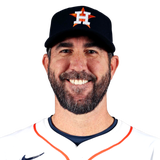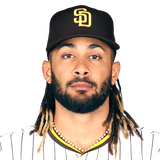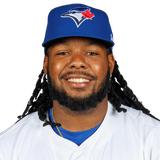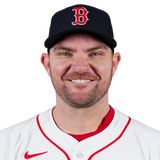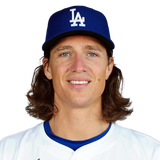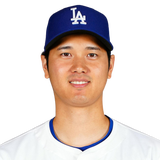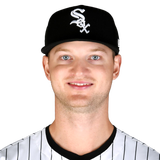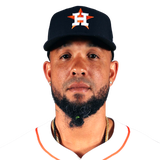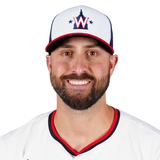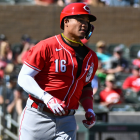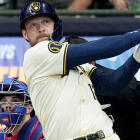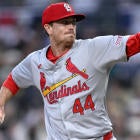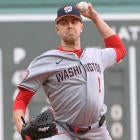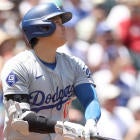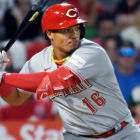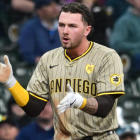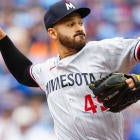When looking for busts for Fantasy, everyone has their own rules. For some, it's as simple as, "I think this player is being overdrafted," and that's a more than reasonable way to look at it.
Our Scott White went further than that, making his bust list solely of players with "the potential to wreck you." That list featured some big names going early in drafts, and you'll see some of his picks on my list, too. You can't spend as much time talking about baseball as Scott and I do without finding at least a few places where you agree.
My definition of a bust isn't quite so easy to pin down. But I have a few guiding principles that I like to follow when trying to figure out who I'll avoid on Draft Day. Here they are, in no particularly order:
- Father time is undefeated — Even David Ortiz would have slowed down eventually, he just had the good sense to retire before it happened. Usually, players are discounted for their age, but on those occasions when they aren't, it's usually going to raise my alarm bells.
- Don't pay face value for career years — Sometimes, a career year is just the start of a true breakthrough: See Christian Yelich or Trevor Story in 2018. And sometimes, it's just a career year: See Matt Carpenter, Mitch Haniger, Brandon Nimmo, David Peralta, or Jesus Aguilar, all of whom were, somehow, top-30 in the majors in OPS in 2018. In the long run, you probably won't go broke betting against career years.
- Don't overreact to small sample sizes — This goes for both the partial season superstars and the "second-half breakouts." Sometimes, it's all we have to go on; sometimes, there are underlying reasons to believe in it. Either way, the smaller the sample, the more skepticism you need to treat players with.
- Too good to be true — This is your catch all for your BABIP outliers, FIP overperformers, HR/FB oddities, etc.
- Don't pay for skills that are abundant — There's a reason Scott says you need to pay the Draft Day premium for steals and ace pitchers.
- Don't expect the unexpected — If a player hasn't done it before, it's hard to expect them to do it now.
These aren't hard and fast rules, of course — Yoan Moncada in my breakouts column breaks at least two of these rules, and Ryan Braun breaks at least two more as a sleeper, because there are often compelling reasons to shirk them. But when I'm looking for players to avoid, this is where I'm starting.
These aren't necessarily players I won't draft — sometimes, the value is too good to pass up — but they are the 10 players I have the most concerns about. And now you know why:
Chris Towers' Busts 1.0
| ||||||||||
Risk Factors: Father time is undefeated; Don't pay face value for career years
You could also toss Max Scherzer in this spot, as both are defying history to by pitching at this level. In Verlander's case, he'll be 37 before his first spring start, and is coming off a season that was pretty close to the best of his career, if it wasn't the best. He has been a model of health and still throws flames, but eventually, Verlander is going to slow down, and this is a case where his age isn't being factored into his draft price. Charlie Morton and Zack Greinke, on the other hand, are going around 80th overall despite giving ace production in 2019, and age surely plays a part in those discounts. If you want an ace in the first round, Verlander has to be on your board, but it's worth acknowledging the risk you're taking on by doing so.
| ||||||||||||
Risk Factors: Don't overreact to small sample sizes; Too good to be true
I was on the RotoWire Fantasy Baseball Podcast with Jeff Erickson recently, and he made a good point about Tatis when I mentioned him as a bust candidate: This might be the last time you can get Tatis in the second round. You don't want to fade Tatis entirely, because he brings a rare blend of power and speed to the table that could absolutely make him a first-rounder this time next year — if you normalize every player's stats to a 150-game pace, Tatis would have been the No. 2 player in Roto leagues in 2019. Of course, there's a reason you have to talk about pace with Tatis: He played just 84 games, missing more than a month early in the season with a hamstring injury and then saw his season come to an abrupt end in mid-August with a stress reaction in his back. Back injuries are especially tricky, and you have to have some concern that Tatis may be less inclined to run. However, even if that doesn't come to fruition, there's still plenty of room for Tatis to regress just with the bat, thanks to a near-.400 BABIP and surprisingly underwhelming batted-ball metrics. There's a lot of risk that isn't baked into his early-second round draft price.
| ||||||||||||
Risk Factors: Don't pay for skills that are abundant; Don't pay face value for career years
It's hard to know if Alonso had a career year in 2019, but I'd bet on it; Aaron Judge hasn't come close to a 50-homer pace in two seasons since his incredible rookie season, and Alonso doesn't have Judge's raw power. The floor is high, but Alonso's value is strongly tied to being a home run outlier. If Alonso is more like a 40-homer guy, all of a sudden, the profile doesn't look quite as appetizing when you can find guys with the potential to drop 40 bombs even in the middle rounds.
| ||||||||||||
Risk Factors: Don't expect the unexpected
Guerrero is going to be a Fantasy superstar someday soo. And I'll admit, even with his inclusion on this list, I haven't been able to avoid taking the plunge in one or two leagues so far. But, I'm playing in several leagues, so I can afford to take the chance Guerrero makes that second-year leap. If you're only playing in one or two leagues, it's tougher to justify betting on Guerrero taking the leap in 2020, vs. 2021 or beyond. I'll just compare what a few projection systems expect for Guerrero compared to one of my absolute favorite mid-round values:
- Guerrero, PECOTA: .274 average, 76 runs, 25 home runs, 85 RBI, 4 steals
- Guerrero, STEAMER: .295-86-25-87-3
- Justin Turner, PECOTA: .278-73-24-79-5
- Justin Turner, STEAMER: .281-86-26-85-3
It's not a perfect comp — both systems think Guerrero will be better — but the gap is pretty small there. In ADP, however, the draft is nearly 100 spots. I can't blame anyone who takes the chance that Guerrero emerges as the Nolan Arenado-esque stud, but let's at least acknowledge the risk.
| ||||||||||
Risk Factors: Don't overreact to small sample sizes; Don't pay face value for career years
With relievers, it's hard not to overreact to small samples — they're all we've got! And Hendriks' 2019 was about as good as a relievers season can be, with his 1.80 backed up by a 1.86 FIP, and a 2.0 mph jump in fastball velocity to grant some credibility to the whole enterprise. However, Blake Treinen, the guy Hendriks replaced at closer for the A's in 2019 looked just as bulletproof a year ago as Hendriks does now. In Hendriks' case, however, he had a three-year stretch prior to 2019 where he had a 4.01 ERA and 1.297 WHIP. I'd much rather bet on a bounceback from Edwin Diaz or Craig Kimbrel, both of whom are going later than Hendriks.
| ||||||||||
Risk Factors: Don't overreact to small sample sizes; Don't pay face value for career years; Don't expect the unexpected
Hendriks threw nearly 25 more innings than Glasnow did in his breakout 2019 season, just to give you a sense of what we're working with here. Glasnow is an incredible talent, and he pitched like the best pitcher in baseball when he was on the mound, but buying him as a top-20 pitcher involves believing he'll do two things he's never done: Pitch a full season in the majors and consistently throw strikes. Even his 5.6% walk rate in 2019 is a bit of a mirage; he walked more than 10% of batters in four (admittedly brief) starts he made after coming back from his elbow strain in September. Oh yeah, did I forget to mention Glasnow missed most of the season because of an elbow injury? Glasnow has top-five potential, but he's only pitched at that level for a month and a half. He could win you your league, or he could be a waste of a valuable fifth-or sixth-round pick. You'll have to figure out whether that's worth the risk.
| ||||||||||||
Risk Factors: Unique risks for a unique player
I have trouble buying Ohtani in any weekly league, because he's going to be a part-time hitter and won't pitch until mid-May, but a recent H2H categories mock draft with daily lineup changes we did makes me question just how valuable he'll be in that format, too. For the first month or so of the season, Ohtani will likely be shuttling back and forth between the majors and minors so he can make rehab starts, so you won't have access to him as a pitcher and he'll likely be missing several days a week as a hitter. Once he's back on the mound and pitching in the big leagues, you'll have the option of sliding him in and out of your lineup as a hitter or a pitcher depending on where he's being used on any given day, but it's entirely possible he won't be worth trusting as a pitcher for a while, given the lengthy time off the mound. Maybe he emerges as that true Swiss Army Knife by July, but it may not be worth the headache at that point.
| ||||||||||
Risk Factor: Too good to be true
One thing about playing Fantasy baseball in 2020 is, the community around the game has gotten so, so sharp. A decade ago, a 22-year-old coming off 2.68 ERA in 174.2 innings would be treated like a borderline ace; now, we know better. Soroka was good in 2019, but he probably outperformed his true skill level by at least a full run in ERA. His price — No. 26 SP off the board on average — mostly reflects that, and he'll probably be a fine value for whoever picks him there, because the floor is very high. But at starting pitcher, it's worth looking for ace potential, and I just don't see that with Soroka. I can see it with the likes of Brandon Woodruff, Corey Kluber, Sonny Gray, and Carlos Carrasco, not to mention breakout picks Zac Gallen and Jesus Luzardo, all of whom are coming off the board after Soroka. In his case, it's less about what Soroka does wrong, and more about the opportunity cost of taking a low-strikeout, groundball artist at that spot.
| ||||||||||||
Risk Factors: Don't pay for skills that are abundant; Father time is undefeated; Too good to be true
Abreu managed to drive in 123 runs to lead the AL in 2019, but finished just eighth in Fantasy scoring at first base, a sign of how pedestrian his production was overall. He finished 12th at the position in OPS, and while his average bounced back a bit from a down year, it was still the second-lowest of his career. Abreu is a decent first base fallback option, but paying for him coming off a career outlier in RBI — a notoriously difficult stat to predict — is just bad process, especially since Abreu managed that RBI number despite leading the majors in double plays.
| ||||||||||||
Risk Factors: Don't overreact to small sample sizes; Don't pay face value for career years; Too good to be true
I've been about as big a Joey Gallo backer as you can find, but I just can't justify taking him at his current cost as a top-85 player. Gallo made enough changes to his batted-ball profile that I can buy him exceeding his career BABIP of .275, but we shouldn't overlook that he had a career-high in batting average by more than 40 points despite increasing his already enormous strikeout rate. And that came in just 70 games. Gallo hits the ball just about as hard as anyone in baseball, but it's not like he stands alone — Gary Sanchez and Nelson Cruz had higher barrel rates than Gallo did, while five players had higher average exit velocities. That list includes Miguel Sano, who profiles very similarly to Gallo, but comes off the board 40 picks later. Gallo will hit a ton of bombs, but he seems to be getting priced as if the days of a truly disastrous batting average are behind him, and that's no sure thing.
So which sleepers should you snatch in your draft? And which undervalued first baseman can help you win a championship? Visit SportsLine now to get rankings for every single position, all from the model that called Kenta Maeda's huge breakout last season, and find out.



